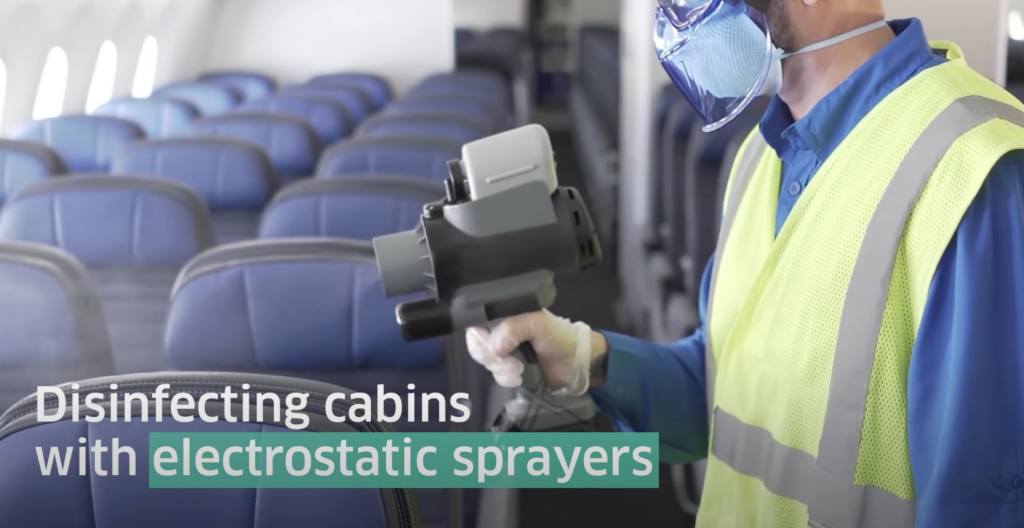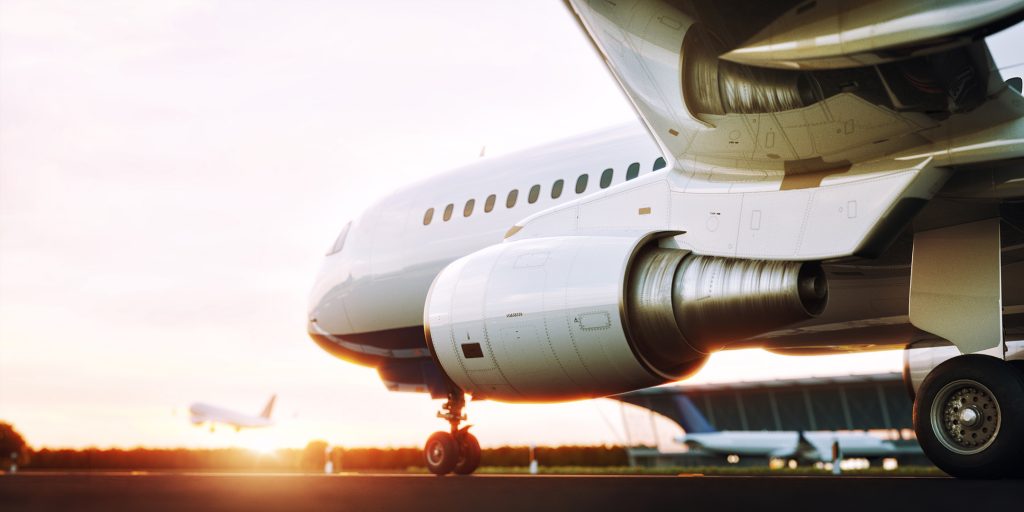Aviation
Healthier spaces. Healthier people.

Aviation Industry
The aviation industry is no stranger to illness outbreaks, so they are familiar with the measures needed to keep employees and customers safe. Unfortunately, the COVID-19 outbreak has led to a decrease in passengers which has hurt the aviation industry. The industry does not have many options when it comes to cutting costs because they cannot close the airport or divert runways easily.
Keeping Employees and customers safe
Like many other airlines, United is taking precautions by disinfecting the entire plane, especially high tough points like, lavatories, galleys, tray tables, window shades and arm rests. If a customer or employee starts showing symptoms, the plane they were on is taken out of commission until it can be fully disinfected. Facial coverings are now required to ensure that the cleaning protocols are as effective as possible, these protocols include the use of electrostatics and other EPA-approved disinfectants. New boarding procedures require passengers to board from back to front to limit people passing by each other in close proximity.

Automotive Statistics
The average person spends 17,600 minutes behind the wheel of a car each year, that’s 17,600 minutes sitting in a space that hosts over 700 different bacterium. The bacteria that live in cars can lead to illnesses like Staphylococcus and Propionibacterium that cause food poisoning, MRSA and other infections.
Steering wheels, cup holders and gear shifts are three of the most common places to find germs in a car. The steering wheel has more germs on it than a gas pump handle and a public toilet seat. The inside of a car is 2,144 times dirtier than the average phone screen. Rideshares are becoming more popular and are also 33% more infected than rental cars, making them a hotspot for spreading illnesses. These statistics alone prove why it is so important for car dealerships to disinfect cars before and after they are touched by anyone.
Preventing the spread of germs
All airlines are thoroughly disinfected every night and after every flight. With close to 1.7 million passengers on planes daily, disinfecting is crucial to preventing the spread of germs.
The dirtiest parts of airplanes are; seat back pockets, headrests and bathrooms. In airplane bathrooms alone there are 265 bacteria colony forming units (CFU). There are 285 CFU in the air vents and 2155 CFU per square inch in the seatback trays. Headrests have the highest aerobic count of any touch point on airplanes.


TruElectrostatic for TruDisinfection™.
Our Emit® system applies disinfectant solutions with its patented technology to surfaces using electrostatic induction charging. The liquid droplets are positively charged by the spray system which is then driven to the surface target area in a consistent manner allowing for comprehensive uniform coverage. Simply put, our technology applies more evenly, sticks to surfaces like a magnet, and reduces waste drastically.
